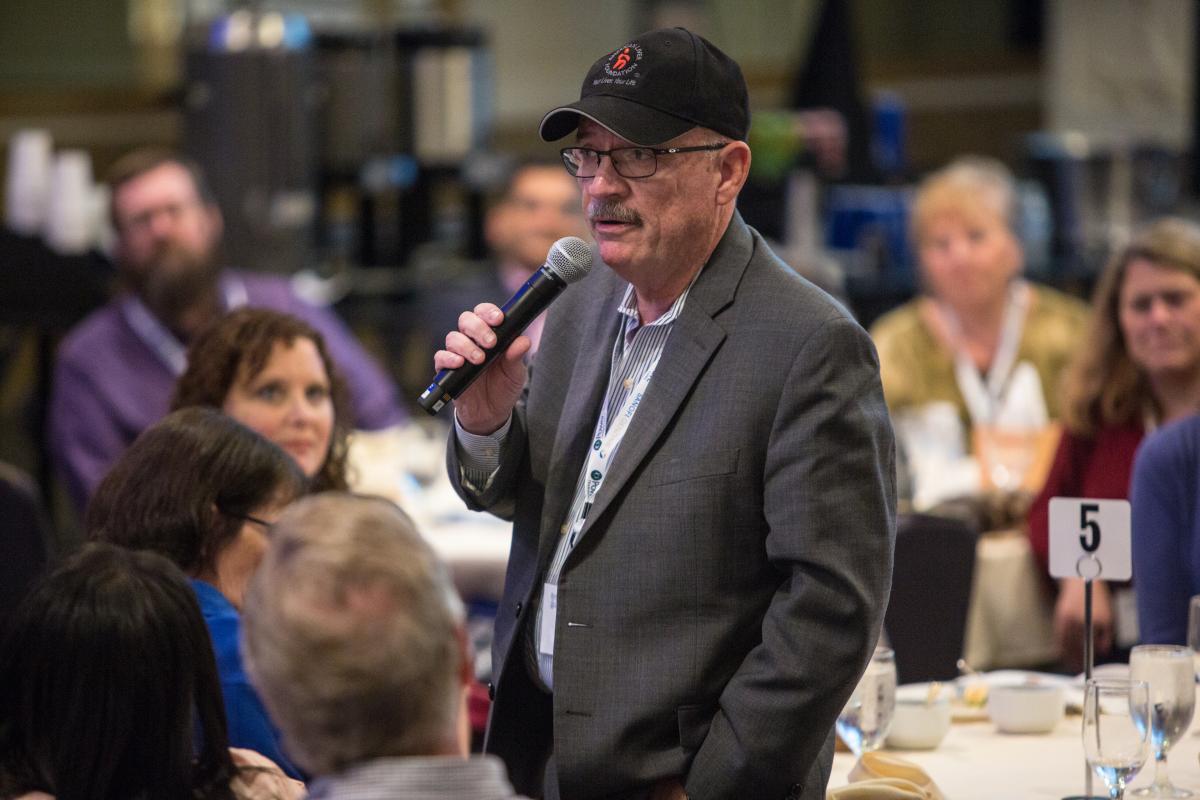The Transplant Patient Summit
Up until this point, we have not involved patients in our society, but that changed on October 23-24, when we held the first ever Transplant Patient Summit in Washington, DC.
Many of us have heard hundreds of patient stories in our careers, but being there in a room with over 100 patients, who put themselves in the vulnerable position to share their stories in a group setting was something that struck many of us.
Our members often work with a particular type of patient, whether it be adult, pediatric, or organ-specific. To say the least, this meeting was an opportunity for every attending member to gain a new perspective.
The AST was able to dig deeper into the patient perspective by creating small breakout groups for different subject areas including psychology, medication, education, insurance, and research. The findings of these breakout sessions were invaluable to the AST.
 Psychology
Psychology
The breakout session on psychology established that those impacted by transplantation have many psychological concerns. The biggest issue to come out of this discussion was caregiver support. Transplant recipients, along with their caregivers, expressed a need for more caregiver information. The group also reported the need for better coping strategies and resources for transplant recipients.
Medication
Consistency was a big issue for the medication breakout group. Patients noted that they received different information across programs and providers. Since some patients received little information about their medication, or what each medication did, some used Google or Facebook for information.
Patients admitted that they sometimes missed doses of their medications. They wondered how important it was to be on time for every dose, and if pharmacists overstressed the importance of adherence to scare patients. Pill boxes and phone apps remained the most popular methods to keep track of medication schedules.
Education
The education session went over the different ways that patients can educate themselves. The patients discussed gaps in information, and it was determined that “one size does not fit all” – teenagers, children, and adults require different information. Many patients also prefer different types of educational resources such as video and written materials.
Going forward, the question is what AST’s role in patient education will be.
Insurance

Insurance is not always the most exciting topic, but if you bring it up in a room filled with transplant recipients, living donors, and caregivers – you can imagine that this results in lively discussion.
Patients noted that drug coverage changes with their insurance companies was a major concern. There was also a perceptible frustration with Washington’s role in health care coverage.
Many stories were told in this session. These stories included patients explaining how they are afraid to change or lose their jobs, fearing that their medications would not be covered. Some patients also reported that they are forced to “stay poor” so that they could qualify for Medicaid. One woman told the group that she has two master’s degrees, and the intelligence and skills to have a great job. However, to afford her son’s medication, she cannot work so Medicaid remains an option.
Another attendee asked the pointed question, “how do you tell an organ donor that their gift failed because the patient’s insurance wouldn’t cover the costs of medication and aftercare?”
Research
I led the research discussion with Jamil Azzi from the Community of Basic Scientists. Common themes that we heard were the relative lack of research innovation and the need for better information about research projects and opport unities
Interestingly, the conversation about research often re-directed towards the major issue of public advocacy. To do the research required to advance the field of transplantation, significant additional funding is required. Achieving this funding will require major additional public advocacy and awareness.
Additional Thoughts
It became strikingly clear that a stronger connection between the AST and patient groups is essential for our increased success. To make this a reality will require much discussion amongst the AST leadership and membership.

On the second day of the Summit after these breakout sessions, we had an opportunity for several teenage patients to give their insights, not only to the AST, but to the other attendees as well. Being a teenager is challenging enough, but adding in an organ transplant and the related responsibly of medication and doctors’ appointments makes that much more difficult.
We also were fortunate to have three members of Congress join us at the Summit – Congresswoman Jaime Herrera Beutler (R-Washington), Congressman Raul Ruiz (D-California), and Representative Jerrold Nadler (D-New York). This was a great opportunity for this group to learn from and interact with members of Congress. Many of the attendees expressed a desire for advocacy. We hope that they found this meeting helpful and that they are able to take these lessons home with them. To help this group with advocacy efforts, we added additional information to the Power2Save website.
Moreover, we captured dozens of stories through Tribute videos during the meeting. I encourage every one of you to create your own video and share this with your patients. Through this campaign, we hope to raise funds for transplant research. Please consider making a donation today.
Finally, this incredible meeting would not be possible without the generous support of our sponsors. I am humbled that I could be part of this, and I look forward to the future of the AST where patients are increasingly involved.
To view the video from the summit, click here.

Add new comment